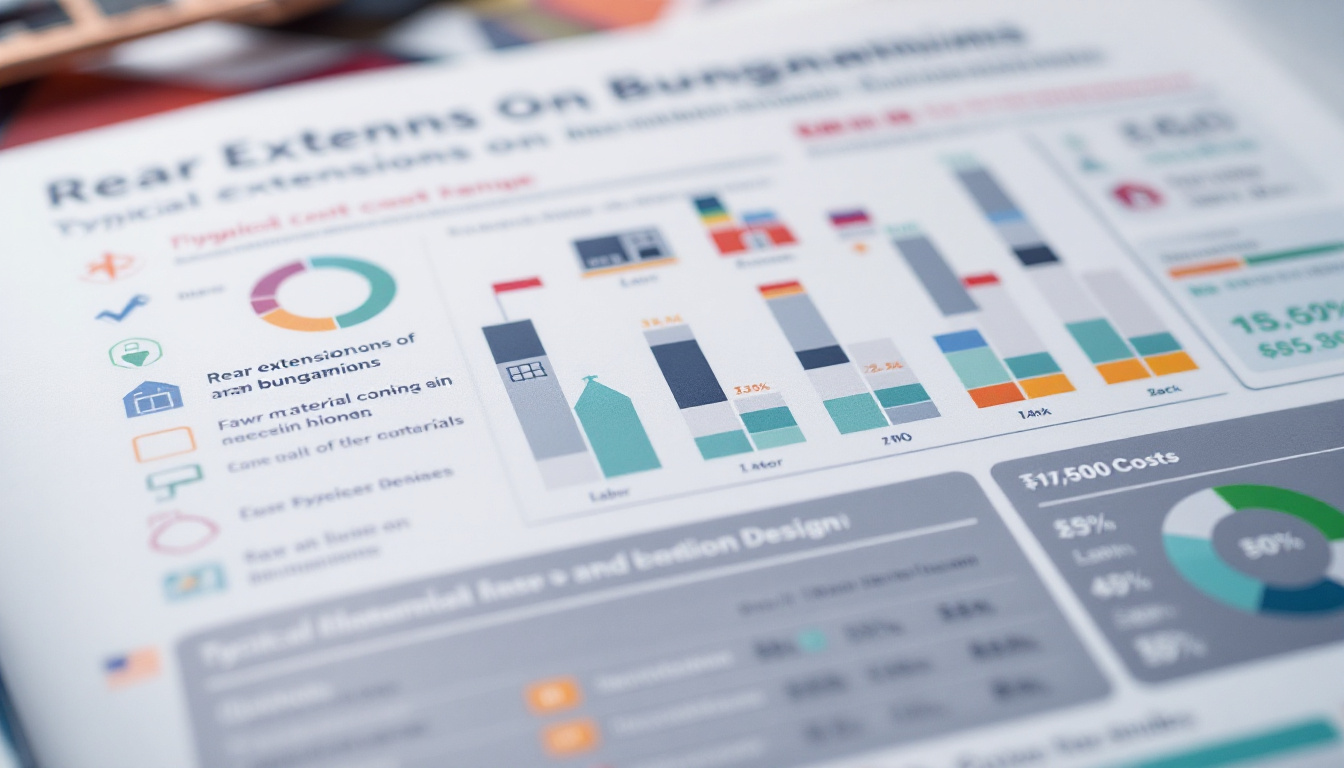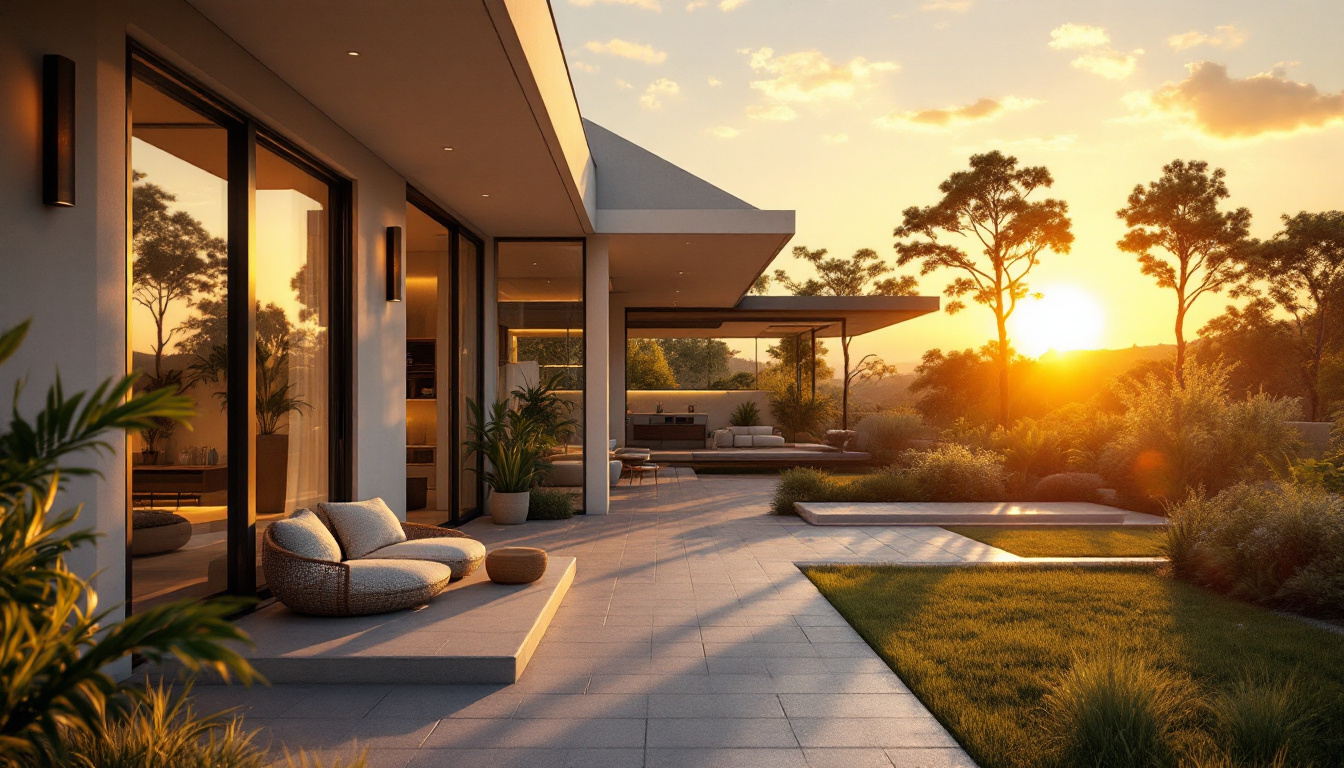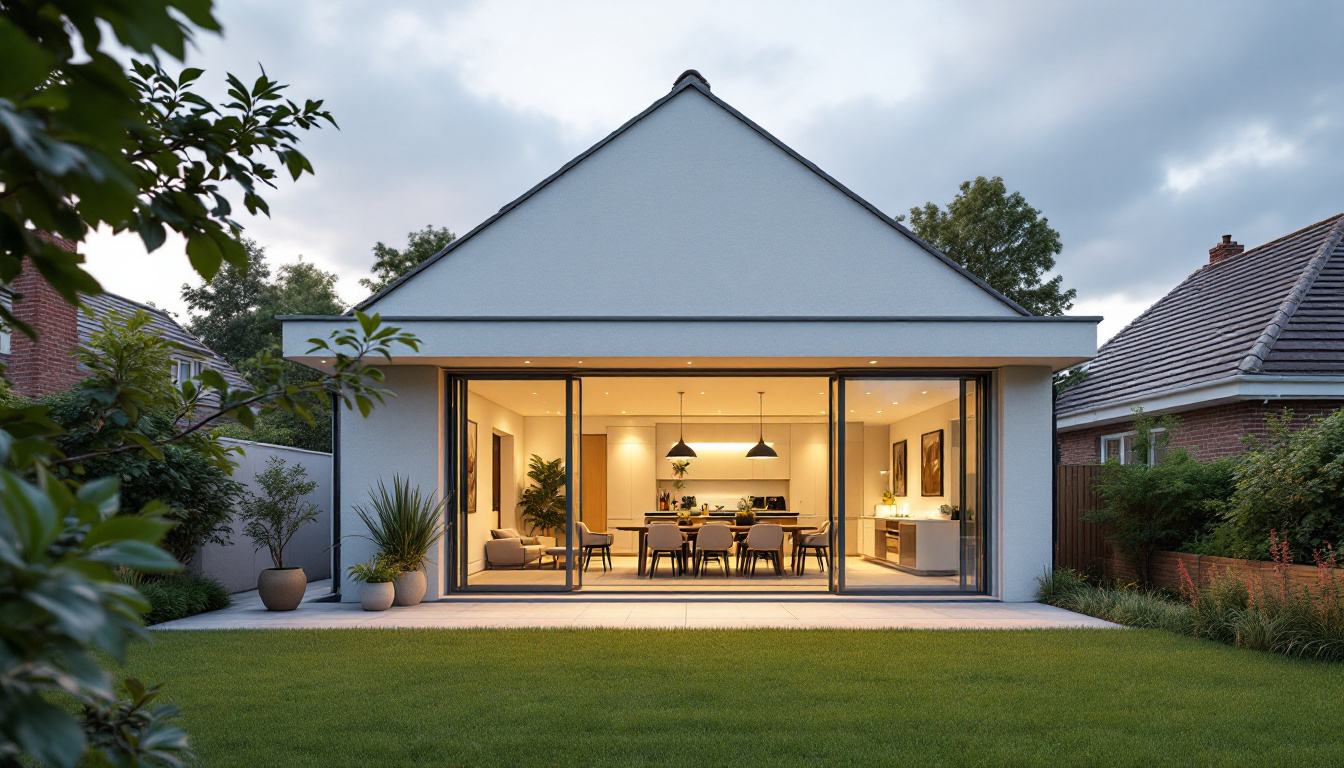How Much Does a Rear Extension Cost for a Bungalow?
Adding a rear extension to a bungalow is a popular way to increase living space, enhance comfort, and boost property value. Whether you're dreaming of a spacious kitchen-diner, an extra bedroom, or a cozy living area, understanding the costs involved is essential before starting your project. This guide breaks down the typical expenses, factors influencing costs, and what you can expect when planning a rear extension for your bungalow.
Typical Cost Range for Rear Extensions on Bungalows
The price of a rear extension can vary widely depending on size, materials, location, and complexity. For a 30m² ground floor rear extension, costs generally fall between £36,000 and £81,000. This range reflects variations in finishes, structural requirements, and contractor fees.

In London, prices tend to be higher due to increased labour and material costs, with a 30m² rear extension estimated between £57,000 and £90,000. Meanwhile, smaller extensions or those using flat-pack systems can be more affordable. For example, a 25m² single-storey flat-pack extension typically costs between £25,000 and £30,000.
Cost Per Square Metre
Looking at the cost per square metre helps to standardize pricing expectations. Single-storey rear extensions in the UK generally cost between £1,800 and £3,500 per square metre. This means a 30m² extension could cost anywhere from £54,000 to £105,000 if you consider the upper limits, though many projects fall toward the middle of this range.
For bungalows, which are single-storey by nature, this cost per square metre is a useful benchmark. However, keep in mind that factors such as site conditions, design complexity, and choice of materials can push costs up or down.
What Influences the Cost of a Rear Extension?
Several key factors affect how much you’ll pay for a bungalow rear extension. Understanding these can help you plan your budget more accurately and make informed decisions.
Size and Complexity
Unsurprisingly, the larger the extension, the higher the cost. But complexity also plays a big role. A simple rectangular extension with standard finishes will cost less than one with intricate designs, multiple roof levels, or extensive glazing.
Extensions that require significant structural work, such as underpinning foundations or altering load-bearing walls, will also increase costs. Consulting a structural engineer early on can help identify potential challenges and budget accordingly.
Materials and Finishes
The choice of materials has a major impact on price. Brickwork matching your existing bungalow tends to be more expensive than timber cladding or rendered finishes. Similarly, high-end windows, doors, and flooring can push the budget upwards.
Glazing is another significant cost element. On average, glazing accounts for about 15% of the total budget for a rear extension. Opting for energy-efficient double or triple glazing might cost more initially but can save money in the long run through reduced heating bills.
Professional Fees and VAT
Professional services such as architects, surveyors, and structural engineers are essential for a smooth project but add to the overall cost. Typically, architects charge around 4% of the total budget, while structural engineers and surveyors account for approximately 3% and 2%, respectively.
VAT is also a significant consideration, often making up about 20% of the total cost. This tax applies to most building work and should be factored into your budget from the start.
Typical Budget Breakdown for a Rear Extension
To give a clearer picture of where your money goes, here’s a typical allocation of the budget for a rear extension project:
- Contractors: 30% – This covers labour costs for builders, plumbers, electricians, and other tradespeople.
- Materials: 20% – Bricks, timber, insulation, roofing, and other building materials.
- VAT: 20% – The value-added tax applied to most construction work.
- Glazing: 15% – Windows, doors, and any glass features.
- Fittings: 5% – Fixtures such as kitchen units, bathroom fittings, and lighting.
- Architects: 4% – Design and planning services.
- Structural Engineers: 3% – Ensuring the structural integrity of the extension.
- Surveyors: 2% – Site surveys and inspections.
- Administration: 1% – Project management and paperwork.
This breakdown highlights how construction labour and materials dominate the budget but also shows the importance of professional input and taxes in the overall cost.
Benefits of Adding a Rear Extension to a Bungalow
Beyond the financial investment, a rear extension can transform your bungalow in several meaningful ways.
Increased Living Space
One of the most obvious benefits is the additional room. A rear extension allows for a large kitchen/diner, a spacious living area, or even an extra bedroom. This flexibility can make your home more comfortable and better suited to your lifestyle.
Improved Property Value
Extending your bungalow can significantly increase its market value. Prospective buyers often look for homes with ample living space and modern layouts, so a well-designed extension can be a strong selling point.
Enhanced Natural Light and Flow
Many modern rear extensions include large windows or bi-fold doors that open onto the garden, flooding the space with natural light and creating a seamless indoor-outdoor flow. This can make your home feel brighter and more inviting.
Planning and Preparing for Your Rear Extension
Before starting, it’s important to consider planning permissions and building regulations. Many single-storey rear extensions fall under permitted development rights, meaning you might not need formal planning permission, but this depends on your local council’s rules.
Engaging with an architect or builder early can help clarify what’s possible and ensure your design meets all legal requirements. Additionally, obtaining multiple quotes and checking references can help you find a trustworthy contractor who offers good value.
Budget Wisely and Allow for Contingencies
Building projects often encounter unexpected costs, so it’s wise to set aside an additional 10-15% of your budget as a contingency fund. This can cover surprises such as hidden structural issues or changes in material prices.
Conclusion
A rear extension is a fantastic way to enhance a bungalow’s functionality and value, but costs can vary widely based on size, location, materials, and design complexity. For a typical 30m² ground floor extension, expect to pay anywhere between £36,000 and £81,000, with London prices tending toward the higher end.

Understanding the typical budget breakdown and key cost drivers will help you plan effectively. With careful preparation and the right professionals on board, your bungalow rear extension can be a rewarding investment that transforms your home for years to come.


